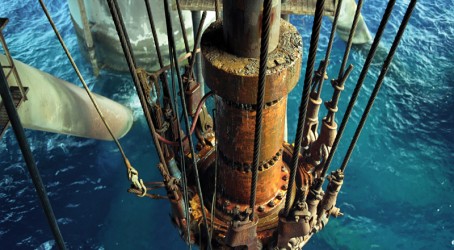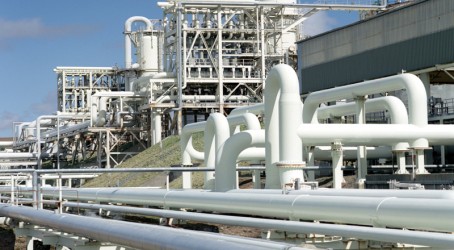The Deepwater Horizon oil spill in the Gulf of Mexico last year offered a stark reminder of the challenges of operating in harsh underwater environments and of the potentially catastrophic effects of getting things wrong.
The monumental clean-up effort resulting from that incident continues apace, with BP issuing almost daily updates on remedial activities in the region. It’s likely that these efforts will be ongoing for the foreseeable future and will cost many billions of dollars.
The fall-out from Deepwater Horizon will undoubtedly feed into discussions at Offshore Europe 2011, the biennial upstream oil and gas event that takes place in Aberdeen from 6 to 8 September and this year is expected to attract more than 60,000 visitors. One of the main focuses at the exhibition and conference will be on how the industry can deliver sustainable hydrocarbon supplies from harder-to-reach reservoirs and in increasingly hostile operating conditions. The days of “quick-win” easy-to-access fields are confined to the past, and the industry is having to embrace new technologies developed specifically for deepwater operation. Meanwhile, should an incident like Deepwater Horizon ever occur again, the offshore industry is being challenged to ensure that adequate emergency responses can be quickly and effectively mobilised.
The opening plenary session at Offshore Europe is entitled Managing Complexity and will be led by Samir Brikho, chief executive of AMEC. Brikho admits that the industry faces a host of challenges as it moves forward.
“The days of simplicity in our industry are gone,” he says. “We are working in new parts of the world, in a more diverse energy portfolio, on larger-scale projects, in new frontiers, with different safety regimes, with new technologies, in an increasingly complex supply chain, and in co-operation with different nations. Complexity is perhaps the only word that can describe it all.”
But making a success of deepwater opportunities is crucial for the global offshore sector, however difficult the engineering challenges might be. Global capital expenditure on deepwater projects is forecast to total $167 billion between now and 2015. According to International Energy Agency estimates, deepwater oil production will increase from 6% to 9% of the total global offshore figure, adding a forecast 2.8 million barrels/day by 2015. Recent advances have seen deepwater developments brought on-stream in depths approaching 3,000m.
Deep and ultra-deepwater discoveries are being made almost every week, most notably the giant finds in Brazil’s pre-salt frontier in the Santos Basin. These have been accompanied by other significant discoveries off the east and west coasts of Africa, as well as in the Mediterranean and Australasia. Deep water therefore represents a core area for adding future offshore reserves, not only for national oil companies and multinationals like BP and Shell, but also for smaller independents.
The crucial role that this sector will play in the oil and gas industry’s future will be a major focus at Offshore Europe 2011, which is reflected by the launch of a dedicated Deep Water Zone. Part of this will be a major display of the Laggan-Tormore project located west of Shetland, and being developed by Total via a subsea-to-shore scheme. When it comes on-stream in 2013, Laggan-Tormore will be the first deepwater development in the North Sea and it exemplifies the sorts of technical challenges that other projects will have to face.


The conditions west of Shetland will ensure that the project tests the skills of Total and its partners to the maximum. At 600m, Laggan-Tormore will have the deepest production wells in the UK. The site is unprotected from the Atlantic, and is prone to extreme waves of up to 33m, along with high winds and low water temperatures. There is also no existing infrastructure available to transport gas to the mainland.
Total has opted to develop Laggan-Tormore via an innovative subsea-to-shore scheme that will involve extensive operations to build a new onshore gas terminal plus subsea facilities and pipelines. The overall development concept consists of a long-distance tie-back of subsea wells connected to a new gas processing terminal at Sullom Voe on Shetland, with further export of the processed gas to the Frigg (FUKA) pipeline system in the North Sea.
The subsea production system offshore will consist of two identical six-slot template-manifolds, with up to eight development wells required to produce the expected reserves and an initial plateau production rate of 500MMscfd. The commingled, multiphase fluid stream will be transported to shore via two 18in production flowlines. The subsea wells will be controlled via an electro-hydraulic umbilical with a separate smaller-diameter flowline injecting a continuous stream of methanol to inhibit the production of hydrates which can form at the low temperatures and high pressures experienced.
On Shetland, substantial works will be required to prepare a greenfield site for new gas processing facilities. Utilities for the plant will be provided from the existing BP-operated Sullom Voe terminal.
Once onshore, the multiphase fluid stream will enter a slug catcher designed to manage the significant volumes of liquids that will collect in the flowlines. Further processing facilities will be provided to separate the gas and liquid streams and condition the gas to the specification required for onward export to the FUKA pipeline. The separated liquid condensate stream will be processed and exported to the BP-operated Sullom Voe oil terminal storage facilities prior to transport by tanker.
After the gas is conditioned at the new handling facilities at Sullom Voe it will be compressed and exported via a new pipeline, with capacity for up to 665MMscfd, some 230km south to a tie-in point close to the decommissioned MCP01 platform. From there, the gas will be commingled into the FUKA pipeline and transported onwards to the Total-operated St Fergus gas terminal in Aberdeenshire. There the gas will be further conditioned to ensure compatibility with the National Grid entry specification. Natural gas liquids will be recovered and exported via the existing liquid transportation systems.
The basic engineering study for Laggan-Tormore was launched in February 2009. First gas is scheduled for 2013. The display at Offshore Europe will attempt to explain the project in greater detail.
Offshore Europe 2011 show details
When: 6-8 September 2011
Where: AECC venue in Aberdeen
Opening hours: Tues 6 - 09:30 to 18:00. Wed 7 - 09:00 to 18:00. Thurs 8 - 09:00 to 16:00 (conference open until 18:00)
Exhibitor numbers: 1,500
Exhibitor space: 25,000m2
Expected visitors: 60,000
Major names: Shell, BP, Petrobras, ExxonMobil, Chevron, Statoil, Saudi Aramco, GDF Suez, Centrica, BG Group, Dong, Maersk, Cepsa, Petronas Carigali, Premier Oil, Total and Addax Petroleum
Organisers: Reed Exhibitions and the Society of Petroleum Engineers
For more details see: www.offshore-europe.co.uk